Top Things to do in Rabat Morocco
We explore the capital city of Morocco in Rabat for this post. Use this short guide as inspiration to visit this fabulous historic and cosmopolitan city with so many fascinating places to discover, old and new.
I arrived in Rabat from the regional train that left Marrakesh and the train ride was smooth and uneventful outside of looking out the window to the pastoral scenes unfolding pleasantly. The main station of Rabat was announced but I had a little confusion with another station before that also said Rabat so after a few quick asks and hand motions, I was given nods that this was indeed the correct station and followed the stream of passengers to the front entry doors and busy traffic scene unfolding in front of me. Being the capital of Morocco, I knew that there were a lot of attractions and things to do in Rabat and was ready to explore the city.
Having visited Rabat many times, I share all my favorite places to hang out, historic and cultural sites, shopping in the medina and local foods you should try when you are visiting the city.
If you are planning on visiting the capital soon, use this easy guide to show you the highlights of attractions to visit and the top things to do in Rabat. I was pleasantly surprised by the how clean and safe the city is and compact enough that you can easily visit most of the sites on foot.
Things to do in Rabat Morocco: guide to the main attractions and places to visit in the city
Where is Rabat located?
Rabat is located on the northwest coast of Morocco, where the Bouregreg River meets the Atlantic Ocean. It sits directly across from the city of Salé, its older and more traditional counterpart, and is about an hour’s drive north of Casablanca. As the capital of Morocco, Rabat serves as a political and administrative hub, yet it maintains a calm and orderly atmosphere compared to the country’s busier cities. Its coastal position gives it a mild climate and easy access to beaches, while its inland connections make it a central point for traveling between northern and southern parts of Morocco.
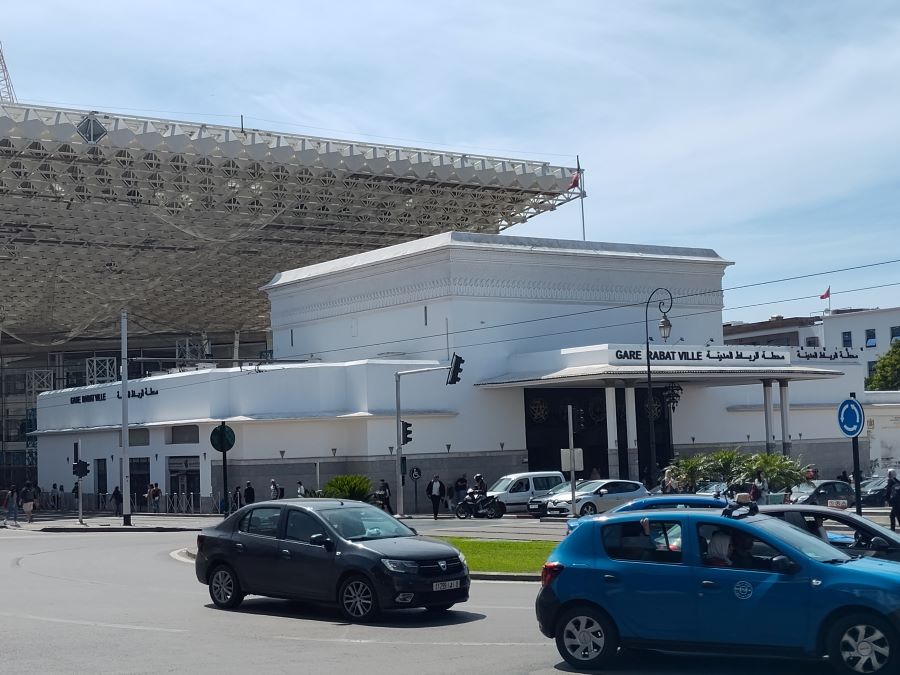
How to get to Rabat
1. By Air
- Rabat-Salé Airport (RBA): Located about 10 km from the city center.
- Direct Flights: Limited international connections from Europe and other North African cities.
- Alternative Airports:
- Casablanca Mohammed V International Airport (CMN): Larger airport about 1.5 hours away by train or car, with more international options.
- From Casablanca to Rabat: Take a direct train, shared taxi, or private transfer.
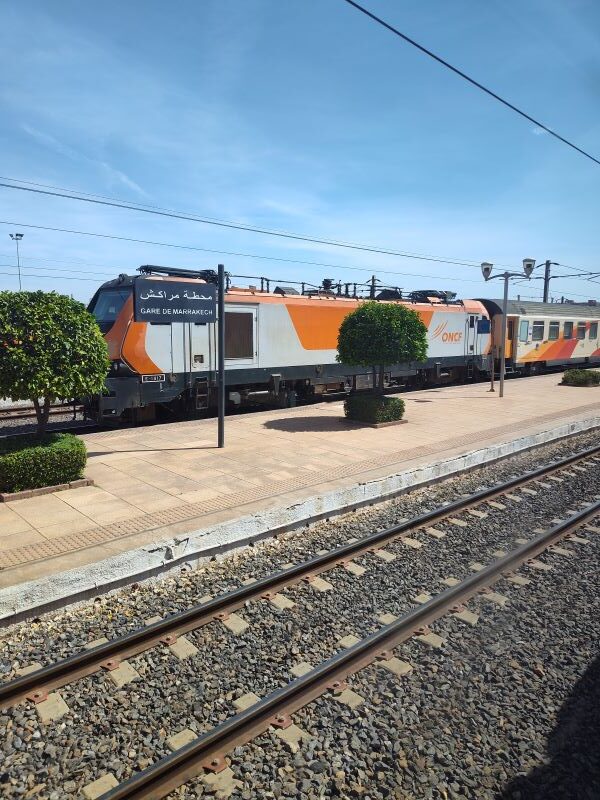
2. By Train
- ONCF (Moroccan National Railways): Reliable and comfortable service connecting major cities.
- Routes:
- From Casablanca – about 1 to 1.5 hours.
- From Fes – about 3 hours.
- From Marrakech – about 4.5 hours.
- Main Stations in Rabat: Rabat Ville and Rabat Agdal.
3. By Bus
- CTM and Supratours: Two major intercity bus companies offering modern coaches and online booking.
- Cheaper option than trains, but travel times may be longer depending on the route.
4. By Car
- Highways (Autoroutes): Good road network connects Rabat to Casablanca, Tangier, Fes, and Marrakech.
- Toll Roads: Expect to pay tolls, especially on major highways.
- Driving Tip: Traffic within Rabat is lighter than in Casablanca or Marrakech but parking can still be tricky in busy areas.
5. By Shared Taxi (Grand Taxi)
- Common for short intercity travel.
- Less comfortable than trains or buses but affordable and fast on short routes (e.g., from Casablanca or Salé).
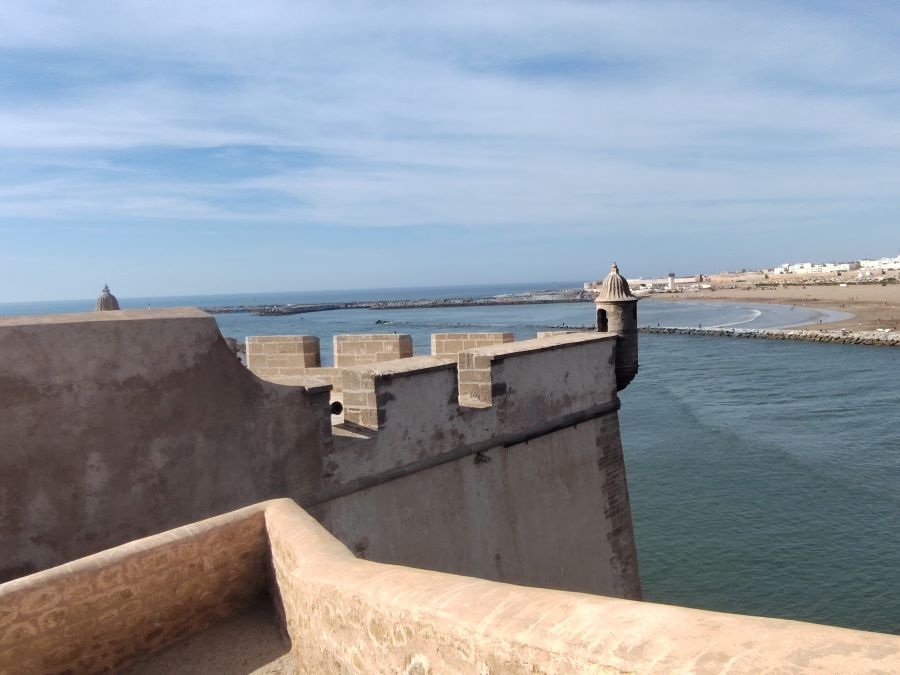
A brief history to Rabat
Rabat’s history stretches back to the 12th century when it was established as a military outpost by the Almohad ruler Abd al-Mu’min. He built a ribat, or fortified monastery, which eventually gave the city its name. Under the Almohads, Rabat grew into a significant port and fortress, though it never fully rivaled other imperial cities. During the 17th century, it became a base for pirates and corsairs, forming part of the short-lived Republic of Bou Regreg alongside neighboring Salé. Rabat’s modern role began under French colonial rule in the early 20th century, when it was chosen as the administrative capital in 1912—a status it retained after Morocco’s independence in 1956. Today, Rabat balances its legacy of historical layers with a contemporary feel as Morocco’s political and diplomatic center.
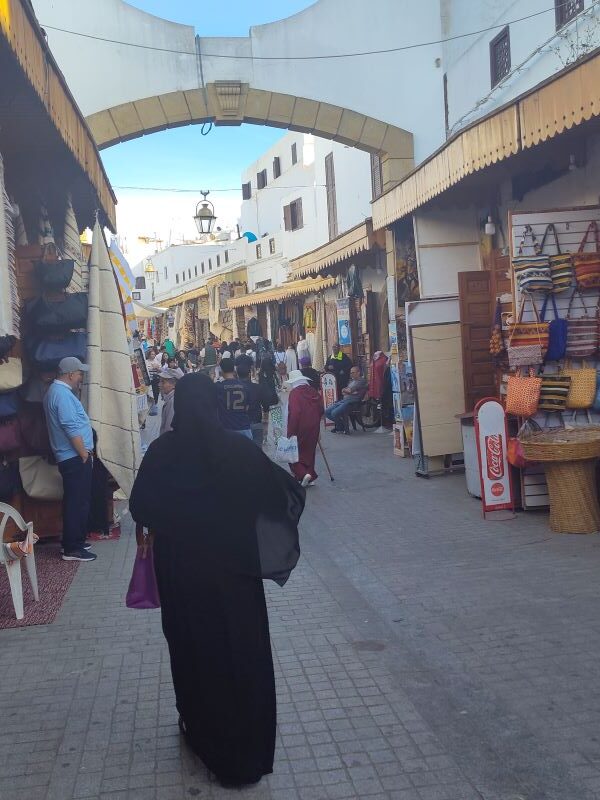
Attractions and things to do in Rabat
I found the city of Rabat to be a cosmopolitan blend of old and new with fantastic beaches, historic sites like the Medina, Kasbah and Chellah, contemporary art museums and amazing cuisine and street food venues to enjoy. Here are the top places you should visit when you are planning a trip out to the capital city.
1. Historical & Cultural Sites
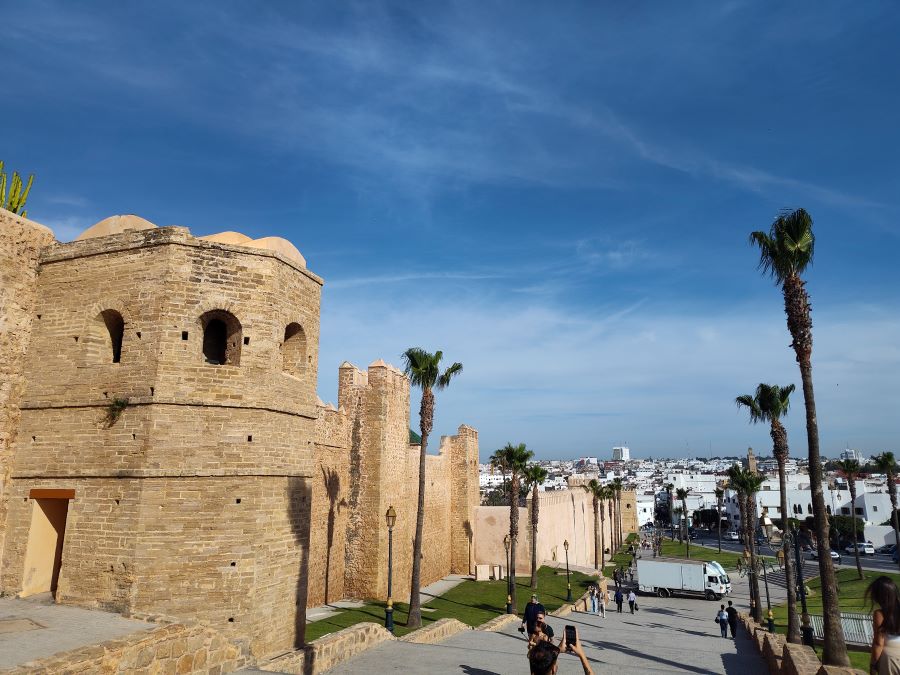
-
Kasbah of the Udayas
The Kasbah of the Udayas is one of Rabat’s most distinctive and photogenic landmarks, perched on a bluff overlooking the Atlantic Ocean and the mouth of the Bouregreg River. Built in the 12th century by the Almohads, this fortified quarter once served as a military base and later as a refuge for Andalusian exiles. Inside its imposing gates, you’ll find quiet, narrow streets lined with blue-and-white homes, giving it a peaceful, village-like feel that contrasts with the city around it. The Andalusian Gardens offer a shady place to relax, and there’s a small museum housed in a former palace with artifacts from Morocco’s past. The views from the kasbah walls are especially striking at sunset, and it’s a great spot to pause and take in both the historical setting and the coastal scenery.
There are so many wonderful vista points to enjoy and capture in photos along with the blue and white section of the Kasbah and fortified section of the historic fort area.
Street scene: Inside the Kasbah walls

Blue and white streets of Kasbah of the Udayas

-
- 12th-century fortress with narrow blue-and-white streets
- Overlooks the Atlantic and the Bouregreg River
- Features Andalusian Gardens and a small museum
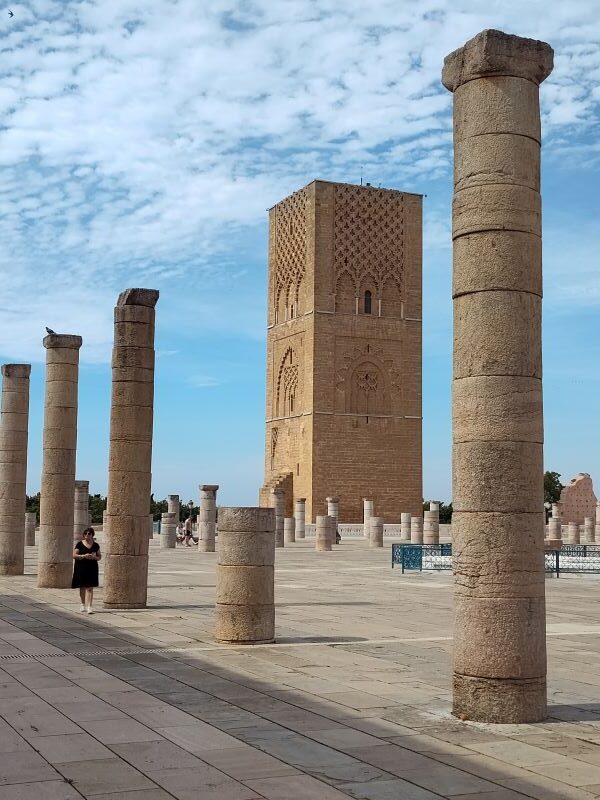
-
Hassan Tower and Mausoleum of Mohammed V
The Hassan Tower and the Mausoleum of Mohammed V stand side by side in the heart of Rabat, forming one of the city’s most important and symbolic landmarks. The Hassan Tower is an unfinished minaret dating back to the 12th century, originally intended to be the tallest in the world but halted after the death of Sultan Yacoub al-Mansour. Its red sandstone structure and surrounding field of columns hint at the grand mosque that was never completed. Just across from the tower is the striking white Mausoleum of Mohammed V, a modern building completed in the 1970s that houses the tombs of the late king and his two sons, King Hassan II and Prince Abdallah. The mausoleum is richly decorated with zellij tilework, carved cedar wood, and a serene atmosphere that reflects the importance of the monarchy in Moroccan life. Visitors are welcome to view the tomb from above in respectful silence.
I found this regal and contemplative site to be fascinating and sacred at the same time and enjoyed spending time to explore the mausoleum and reverence of the guards and also admire this grand mosque ruins that was never built.
-
- Unfinished 12th-century minaret
- Mausoleum houses the tombs of King Mohammed V and his sons
- Important symbol of modern Moroccan identity
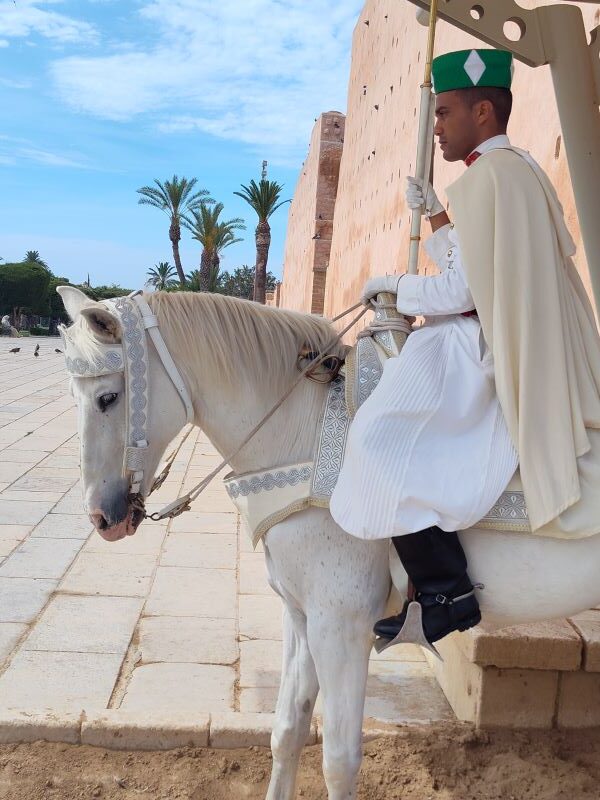
Entry guards at the complex
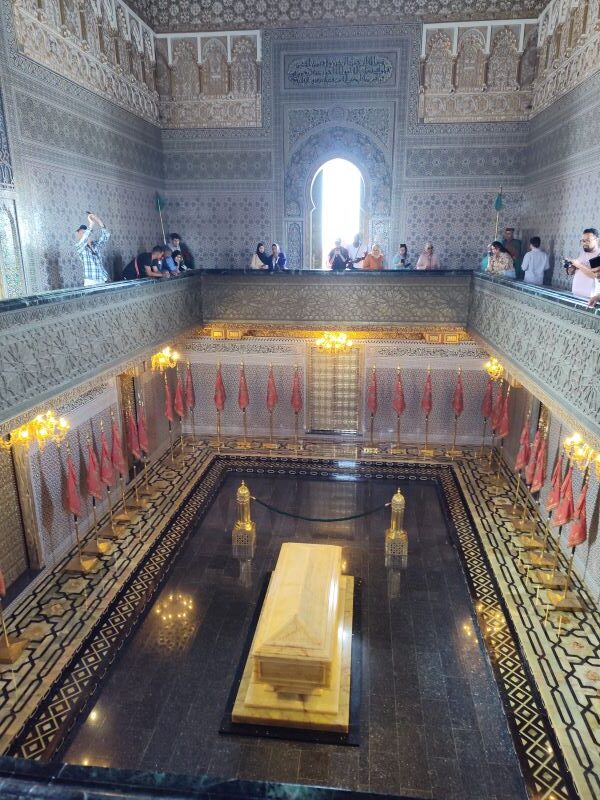
Interior of Mausoleum of Mohammed V
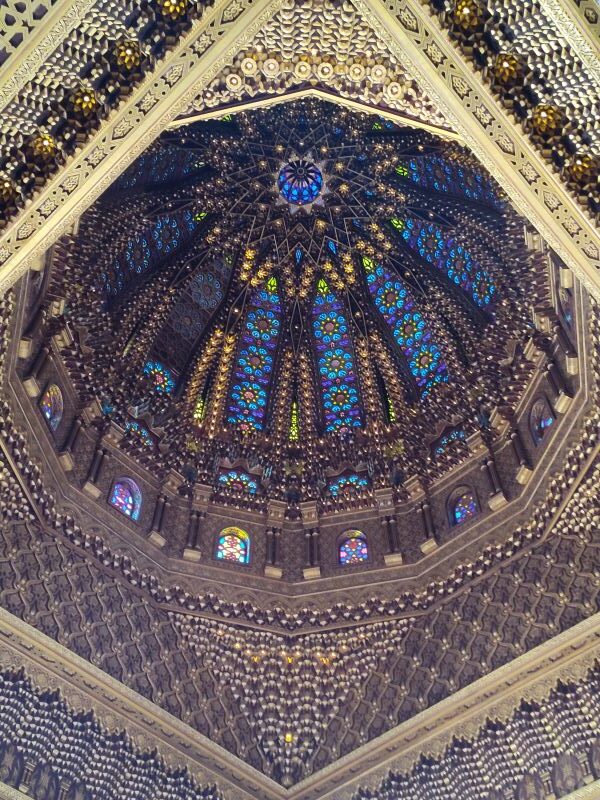
Ornate ceilings of the Mausoleum of Mohammed V

-
Chellah Necropolis
The Chellah Necropolis is one of Rabat’s most atmospheric and historic sites, set on a quiet hill just outside the city center. Originally a Roman settlement known as Sala Colonia, the area was later transformed into an Islamic necropolis in the 14th century by the Marinid dynasty. Today, visitors can walk among the ruins of Roman streets, crumbled walls, and Islamic tombs, all surrounded by wild gardens and the sound of storks nesting on minarets and pillars. The blend of Roman and Islamic architecture, combined with overgrown vegetation and a peaceful setting, gives Chellah a slightly mysterious, forgotten feel. It’s a great place to wander, take photos, and reflect on the many layers of history that have shaped Morocco.
Wondering through the unkempt necropolis and gardens gives you a unique insight to the melding of ancient cultures and a sense of what was forgotten but still alive in this space.
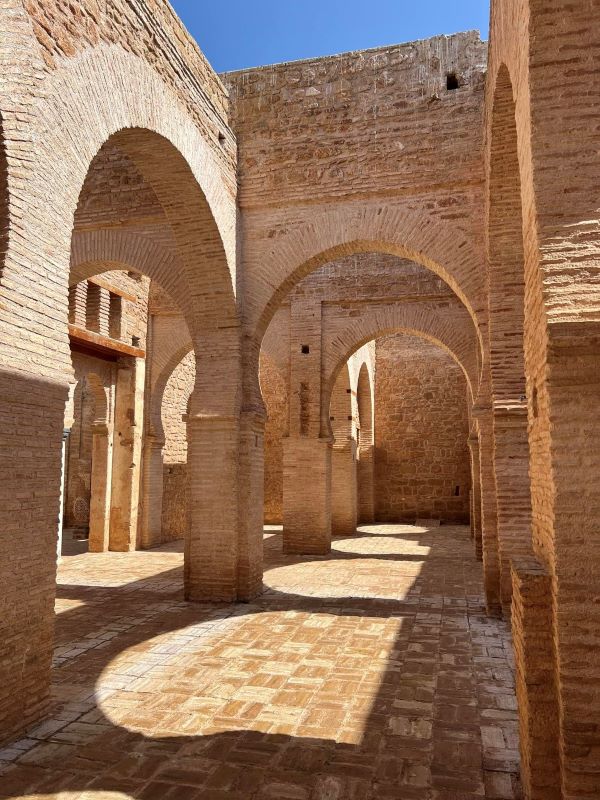
Chellah Ruin details
-
- Ancient Roman ruins overlaid with medieval Islamic tombs
- Peaceful gardens, storks, and crumbling walls
- A great blend of history and nature
2. Museums & Art Spaces
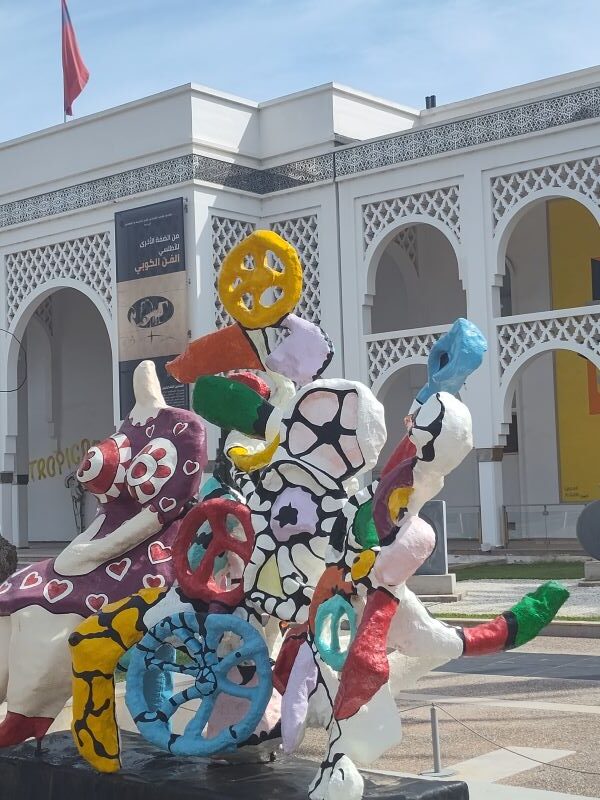
-
Mohammed VI Museum of Modern and Contemporary Art
The Mohammed VI Museum of Modern and Contemporary Art in Rabat is Morocco’s first major institution dedicated entirely to modern and contemporary art. Opened in 2014 under the patronage of King Mohammed VI, the museum showcases works from over 200 Moroccan artists, including notable figures like Hassan Hajjaj and Ahmed Yacoubi. Its architecture blends modern design with traditional Moroccan elements, featuring a white façade adorned with double-arched colonnades and intricate motifs. Inside, the museum offers a variety of exhibitions, educational programs, and cultural events, aiming to promote Moroccan artistic heritage and foster creativity. Notably, it became the first museum in Africa to utilize solar energy, reflecting a commitment to sustainability. Located in the heart of Rabat, the museum serves as a cultural hub, connecting Morocco’s rich artistic past with contemporary expressions.
I totally enjoyed this museum and was impressed by the world caliber of contemporary art and international artists that were one display or had rotating shows presented at the time that I visited.

Interior galleries of Mohammed VI Museum of Modern and Contemporary Art
-
- Showcases Moroccan and international artists
- Modern building with rotating exhibitions
-
Rabat Archaeological Museum
The Rabat Archaeological Museum, also known as the Museum of History and Civilizations, offers a comprehensive look into Morocco’s rich and varied past. Established in 1932, the museum houses an extensive collection of artifacts spanning from prehistoric times through the Islamic era. Visitors can explore exhibits featuring stone tools and human remains from the Paleolithic and Neolithic periods, as well as artifacts from Phoenician, Roman, and Islamic civilizations. Notable pieces include the bronze bust of King Juba II, the ‘Volubilis Dog’ sculpture, and various Roman mosaics and inscriptions. The museum’s layout follows a chronological path, allowing guests to witness the evolution of Moroccan history and culture through its archaeological treasures. Located in the heart of Rabat, the museum serves as a vital institution for preserving and showcasing the nation’s historical heritage.
-
- Houses a rich collection of prehistoric and Roman artifacts
- Closed periodically for renovation—check status before visiting
3. Markets & Local Life
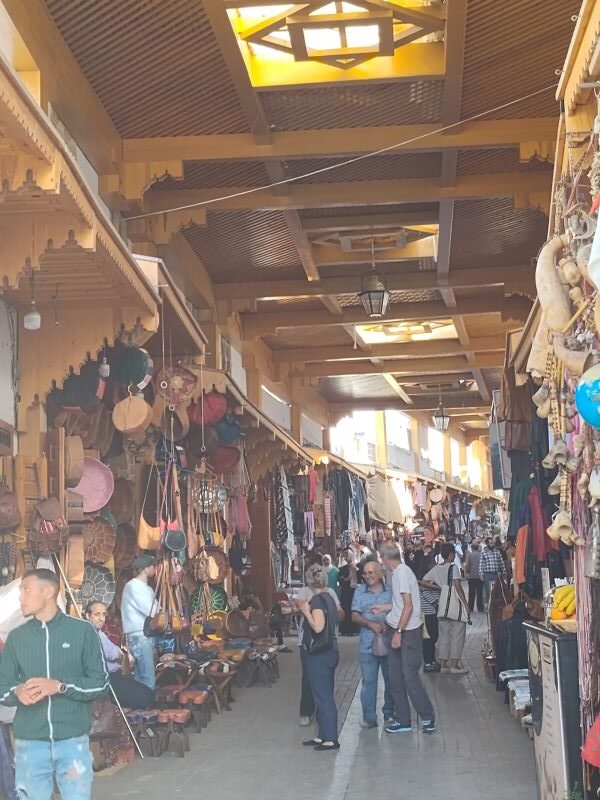
-
Rabat Medina
Rabat’s medina offers a more relaxed and manageable experience compared to the larger, busier medinas of cities like Marrakech or Fez. Its winding streets are filled with traditional shops selling crafts, textiles, spices, and everyday goods, making it a great place to soak up local life without feeling overwhelmed. The atmosphere is friendly and less touristy, giving a genuine glimpse into daily Moroccan routines. Along the way, you’ll find small cafes and street vendors offering simple but flavorful snacks. The medina also has historic sites tucked between its alleys, including old mosques and artisan workshops, providing a quiet but authentic taste of Rabat’s culture and heritage.
I felt the Medina here was cleaner and more open in the more touristy areas but narrows and becomes more like a real marketplace along the side streets that really cater to the local markets with produce, food items, clothing and other utilitarian goods.
-
- Less chaotic than in other cities
- Good for shopping local crafts, spices, and textiles
- Great spot for street food and everyday scenes
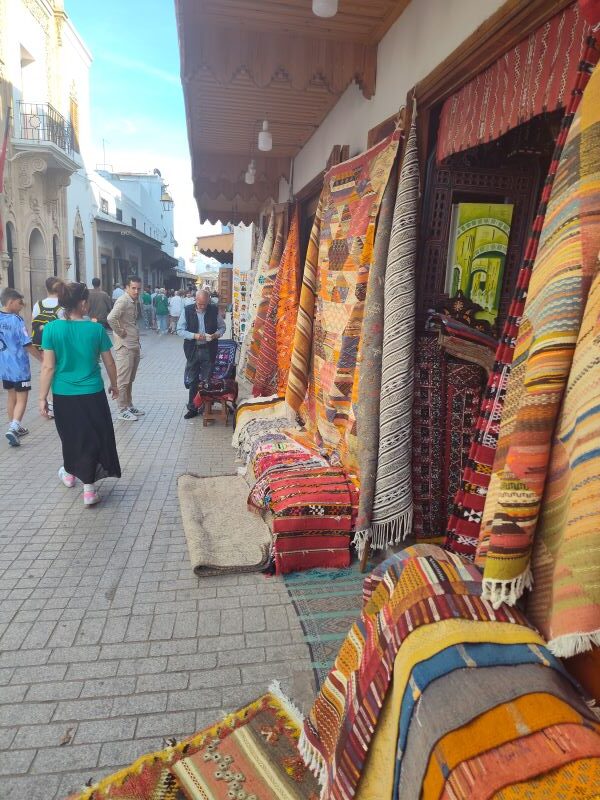
-
Rue des Consuls
Rue des Consuls is one of Rabat’s most storied and picturesque streets, stretching over a kilometer through the heart of the old medina. Its name reflects its historical role as the residence of foreign diplomats, particularly during the 17th and 18th centuries when it served as a “negotiation zone” for European consuls seeking to ransom captives held by pirates in the nearby port of Salé. Notably, the French ambassador Louis Chénier resided here from 1768 to 1782
Today, Rue des Consuls is a vibrant artisan souk renowned for its traditional Moroccan crafts. The street is lined with shops offering a rich array of handmade goods, including intricately woven carpets, leather goods, silver jewelry, pottery, and wooden furniture. The colorful displays of textiles and crafts create a lively atmosphere, making it a favorite destination for both locals and tourists seeking authentic Moroccan products.(Tripadvisor)
Architecturally, the street is adorned with Andalusian-style facades and zellij-tiled fountains, reflecting the city’s rich cultural heritage. The covered walkways provide shade and shelter, enhancing the shopping experience. Rue des Consuls remains a testament to Rabat’s historical significance and its enduring tradition of craftsmanship.
-
- Historic street in the medina known for handicrafts and artisans
- Watch craftsmen at work and find unique souvenirs
4. Outdoor Activities & Leisure
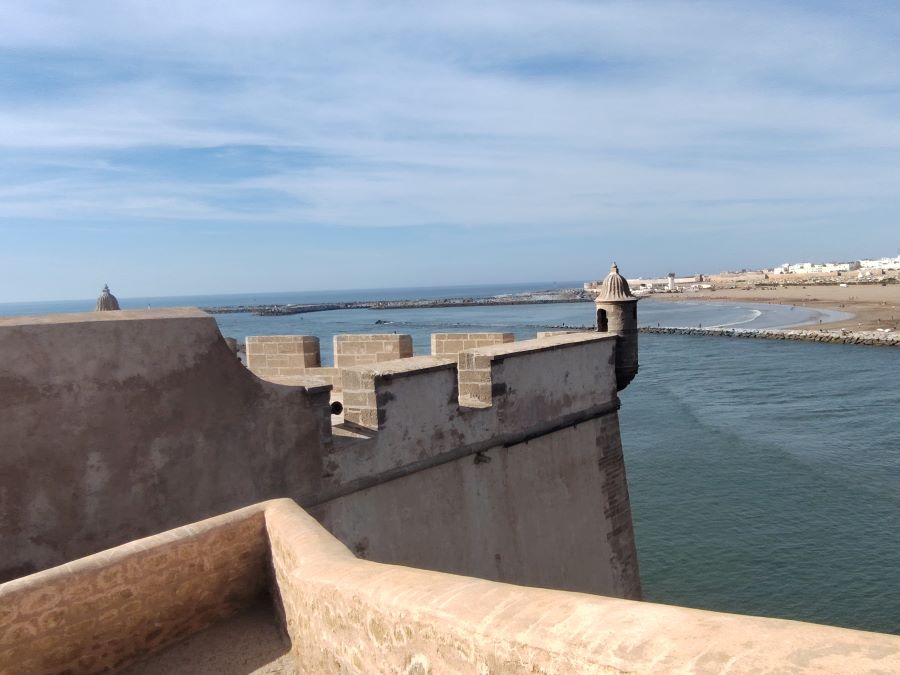
-
Bouregreg Marina and Promenade
- Pleasant waterfront area with cafes and views
- Good for a walk or boat ride along the river
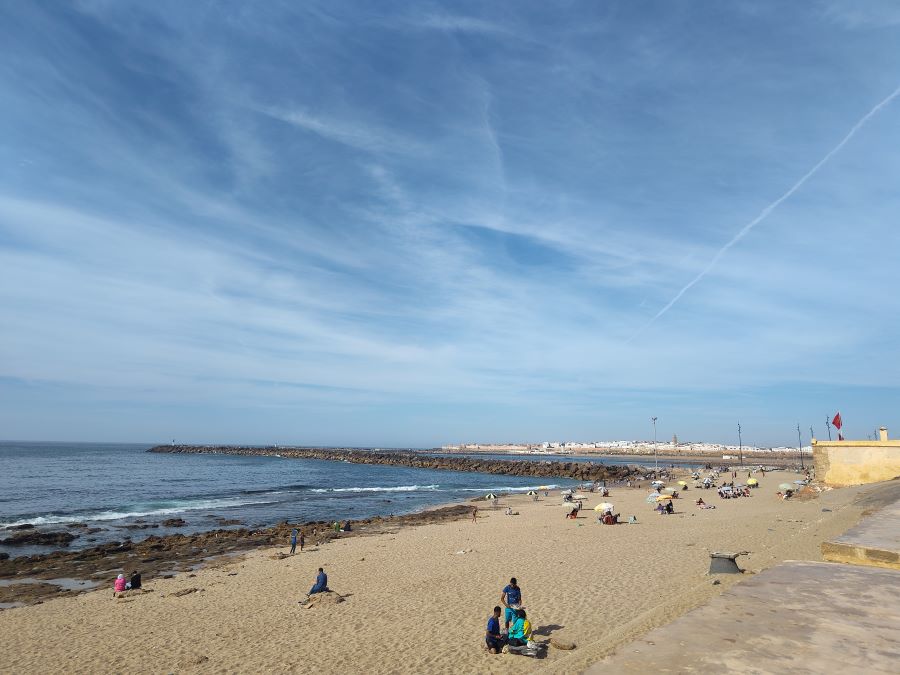
-
Beaches (Plage de Rabat / Oudayas Beach)
- Small public beach near the Kasbah
- Popular with locals for surfing and relaxing
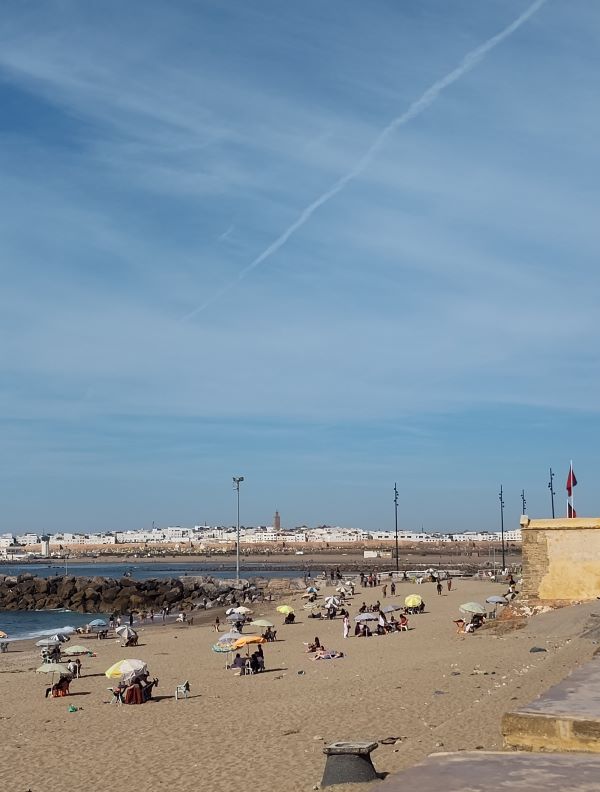
Tidepools at Oudayas Beach
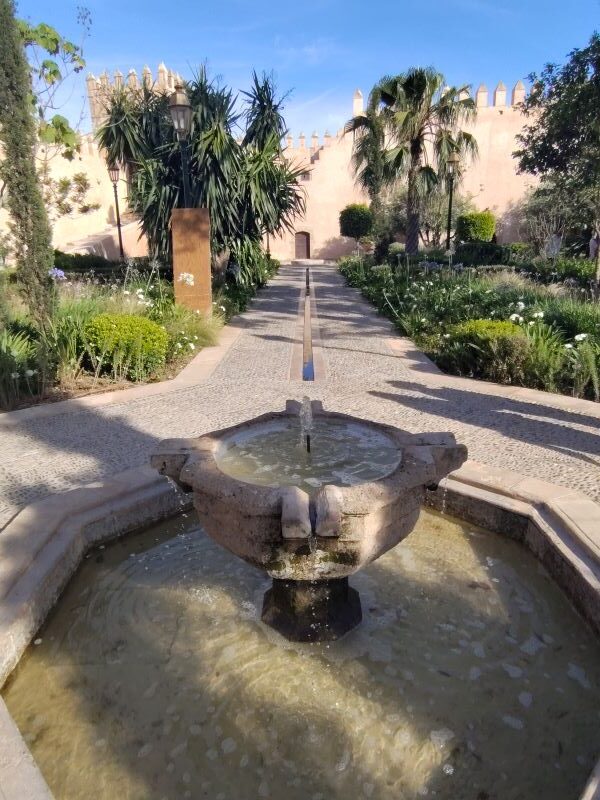
-
Andalusian Gardens
- Tranquil garden inside the Kasbah
- Shady paths, fountains, and birdsong
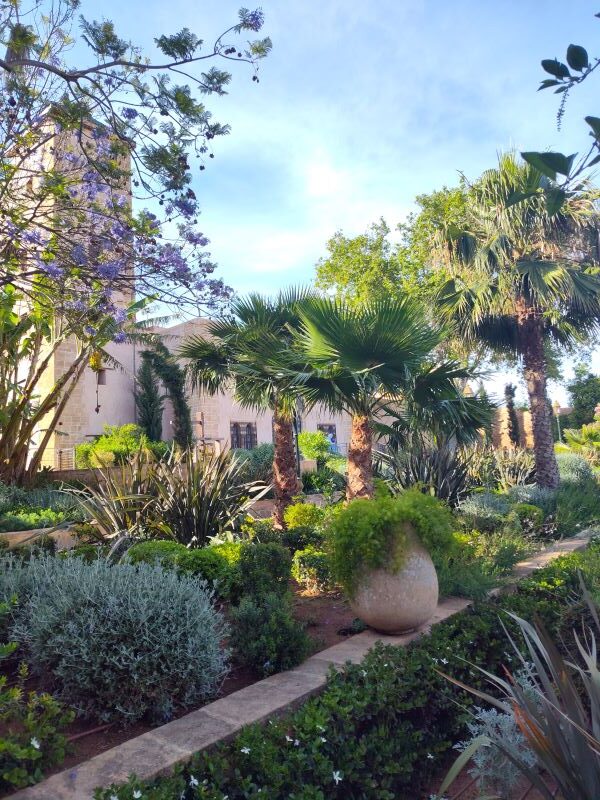
The Andalusian Gardens at the Kasbah
5. Day Trips from Rabat
-
Salé
- Just across the river, accessible by tram or taxi
- Explore the old medina and visit the Great Mosque
-
Temara & Skhirat Beaches
- Coastal areas south of Rabat, less crowded
- Relaxing spots for a day by the sea
6. Religious and Civic Sites
-
Royal Palace of Rabat
- Official residence of the king (viewable from outside)
- Surrounded by lush gardens and administrative buildings

-
St. Peter’s Cathedral
- Roman Catholic cathedral with unique Art Deco architecture
- Still in use, reflecting Rabat’s colonial-era past
Regional foods to try in Rabat
If you are looking to try and specialty dishes or street foods from the region, consider these foods to try in Rabats restaurants and cafes.
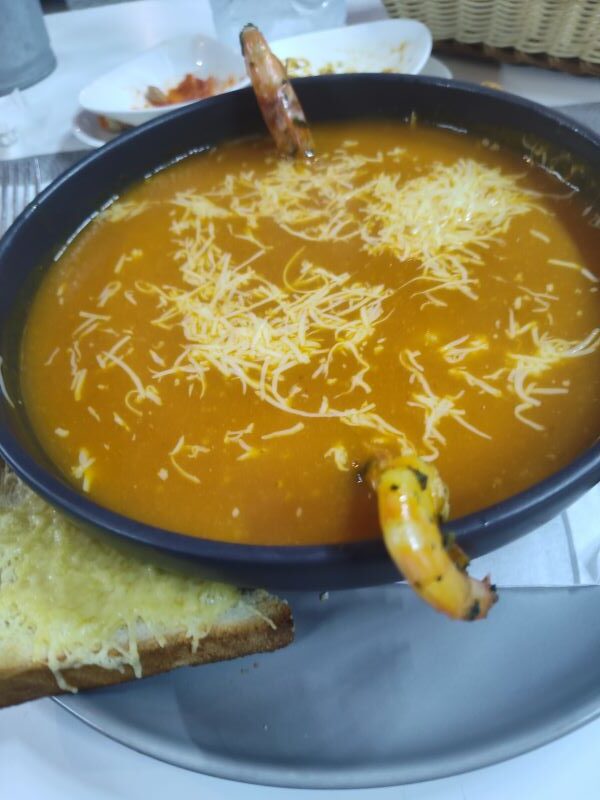
1. Harira
- Traditional Moroccan soup made with tomatoes, lentils, chickpeas, and meat (usually lamb or beef)
- Often enjoyed during Ramadan as a hearty starter
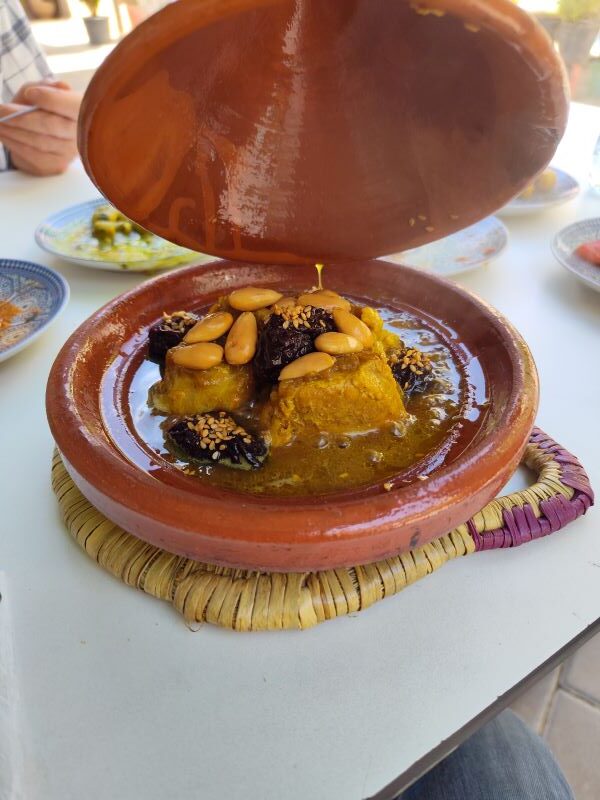
2. Tagine
- Slow-cooked stew named after the clay pot it’s cooked in
- Common varieties include chicken with preserved lemons and olives, lamb with prunes, and vegetable tagine
3. Couscous
- Steamed semolina grains served with meat and vegetables
- Often eaten on Fridays, the traditional day for family gatherings
4. Pastilla (Bastilla)
- Savory-sweet pie made with layers of flaky pastry, pigeon or chicken, almonds, cinnamon, and sugar
- A special occasion dish, rich in flavor and texture
5. Mechoui
- Whole roasted lamb, typically slow-cooked and seasoned with cumin and other spices
- Often served at celebrations or large gatherings
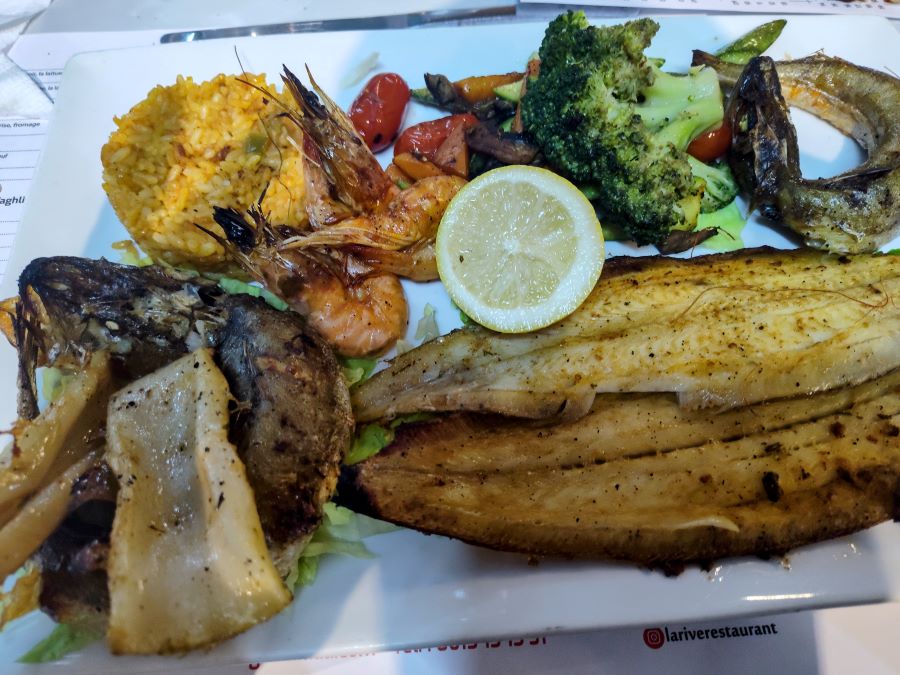
6. Seafood
- Thanks to Rabat’s coastal location, fresh fish and shellfish are popular
- Grilled sardines, calamari, and fish tagines are common choices
7. Moroccan Mint Tea
- Sweet green tea brewed with fresh mint leaves
- A staple beverage and a symbol of hospitality
8. Chebakia
- Fried pastry coated with honey and sesame seeds
- Popular sweet treat, especially during Ramadan
9. Bissara
- Thick, warming fava bean soup or puree, often enjoyed as a breakfast or snack
10. Maakouda
- Spiced potato fritters, crispy on the outside and soft inside
- Frequently sold as street food or served as a side dish
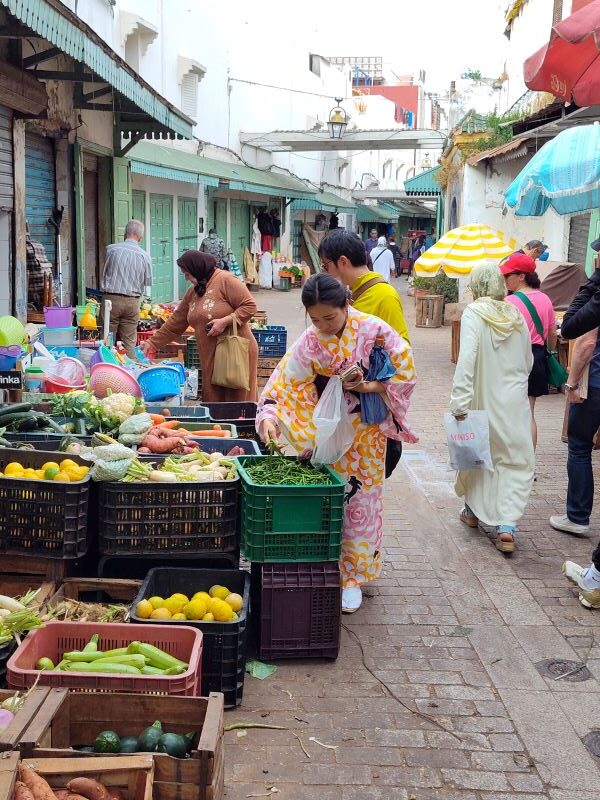
Guided Tours in Rabat
Having a guided tour gives you an insight to visiting without the worries. You’ll have your driver and a guide handle everything and share all the amazing attractions and information to learn about each place you visit. Have a look at these recommendations below:
Fes: Royal Palace, Madrasa, Tannery & old Market Medina Tour
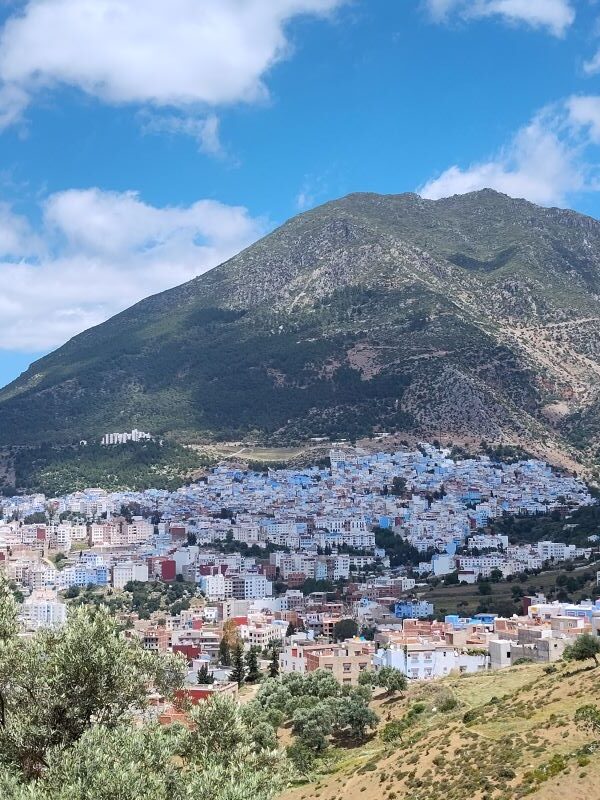
Further reading – Travel around Morocco
If you are planning on touring around the country, please do check out these other posts of cities and attractions to visit in the country
Historic Roman city of Volubilis
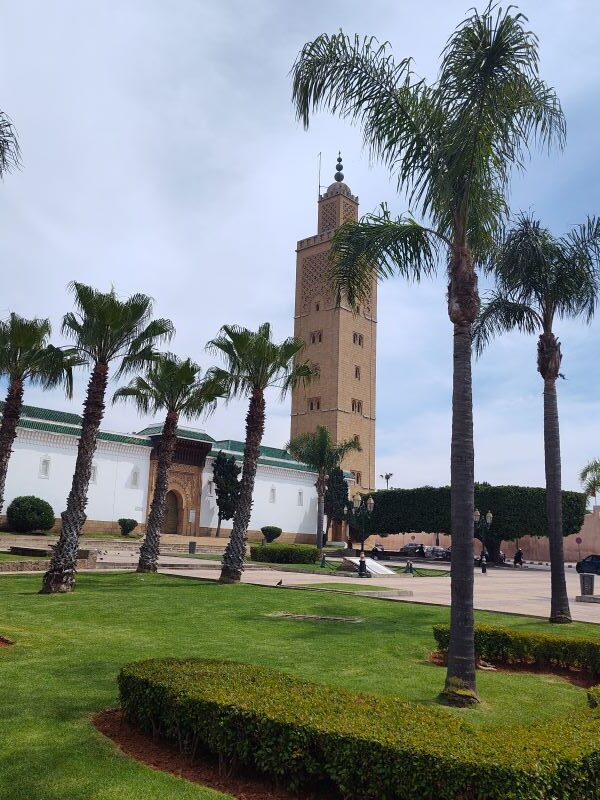
Conclusion to visiting Rabat
Wrapping up a visit to Rabat leaves you with a deeper appreciation for Morocco’s quieter capital—where history, culture, and daily life meet at a slower, more reflective pace. From wandering the Oudayas Kasbah to catching the call to prayer echo through the medina, Rabat offers a grounded, enriching contrast to the country’s busier cities. Whether you’re into architecture, street scenes, seaside views, or cultural gems like the Mohammed VI Museum of Modern and Contemporary Art, there’s something lasting about the way Rabat lingers with you.
If you haven’t yet added Rabat to your Morocco itinerary, consider giving it more than just a quick pass-through. Stay a little longer, take it in on foot, and let its calm rhythm show you a different side of the country. Ready to plan your visit? Start looking into where you’ll stay, what markets to explore, and how to fit this underrated gem into your next Morocco journey.
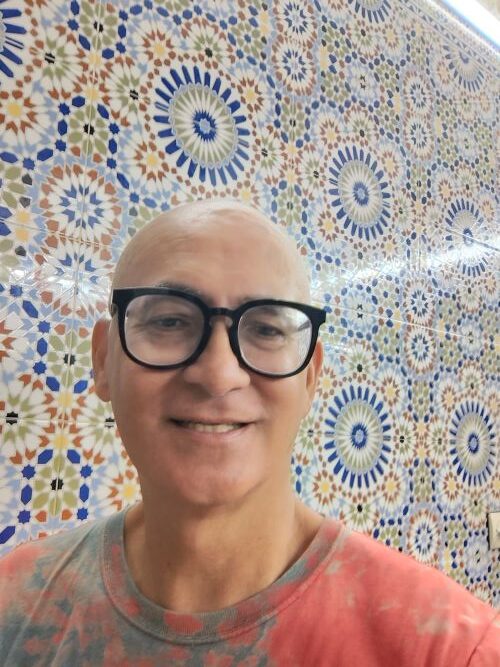
About author – Noel Morata
After relocating from the United States to Andalusia in 2024, I’ve made it my mission to discover every corner of Spain along with many Mediterranean locations, cities and attractions. Based just east of Granada, I’ve spent a lot of time visiting Morocco including multiple extended visits to Marrakesh, Tangier, Chefchaoen and different parts of the country throughout different seasons. My background in history cultural studies and years of residence and exploring all of the Mediterranean countries have given me unique insight into the region’s historical significance, local customs, and culinary traditions.
I regularly update my guides with the latest information gathered through personal visits and relationships with local tourism officials, always seeking what’s new and exciting in each destination. As a self-proclaimed foodie, I’m passionate about discovering authentic local markets and regional specialties.
If you love antiquities and Unesco World Heritage sites, you should visit Volubilis here in Northern Morocco
Disclosure – some of the links above to various tours, transportation and hotels are affiliate links that benefits our site if you book here and we appreciate your support. The links are competitive, and you are not paying above what other affiliates provide.
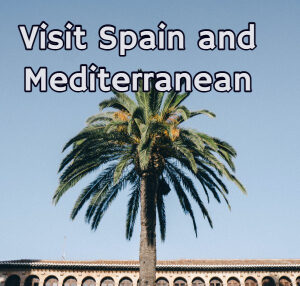
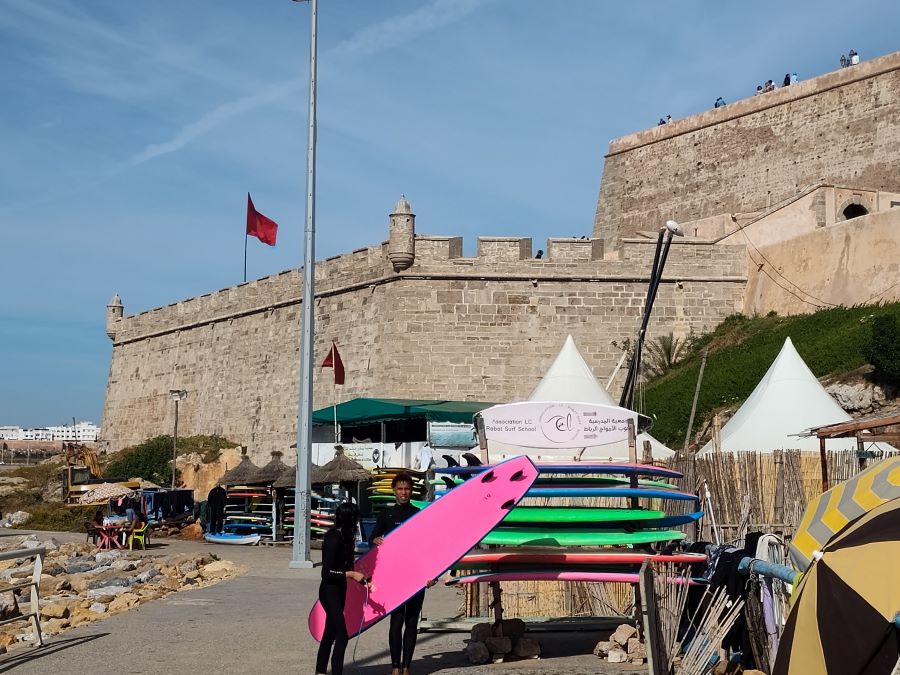
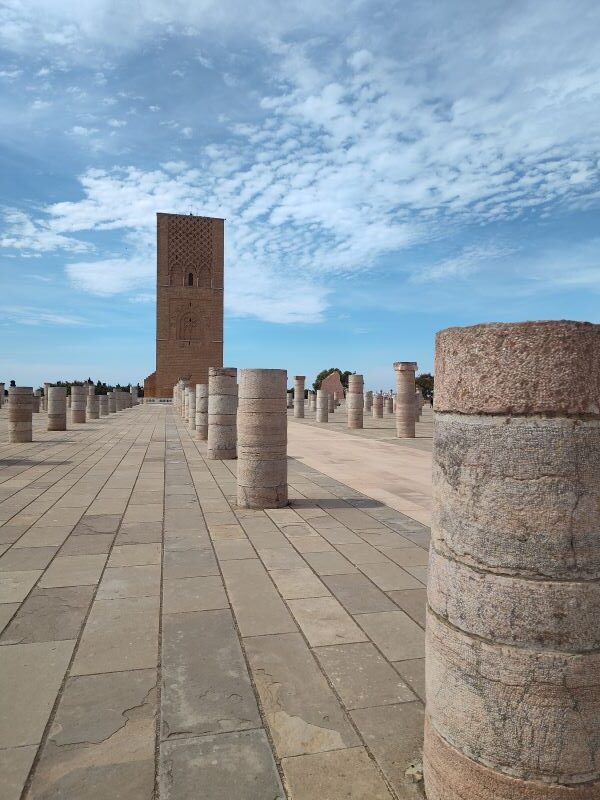
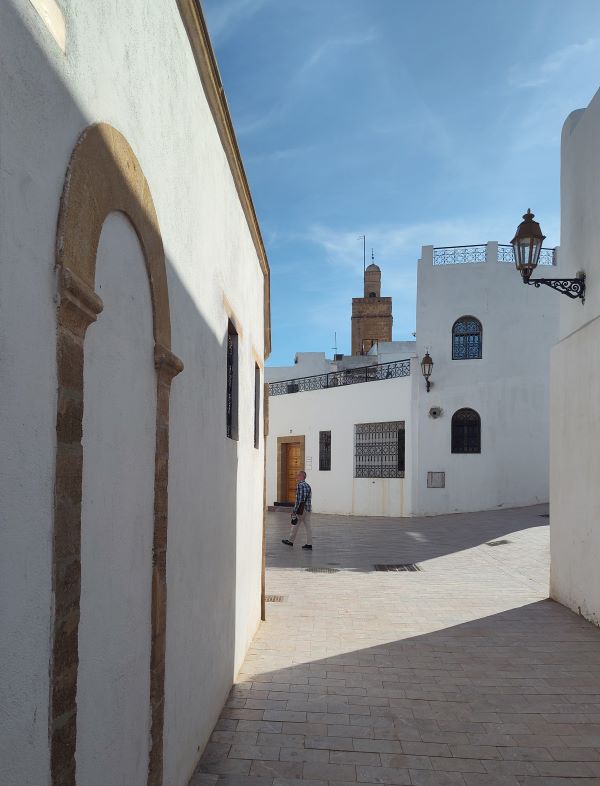
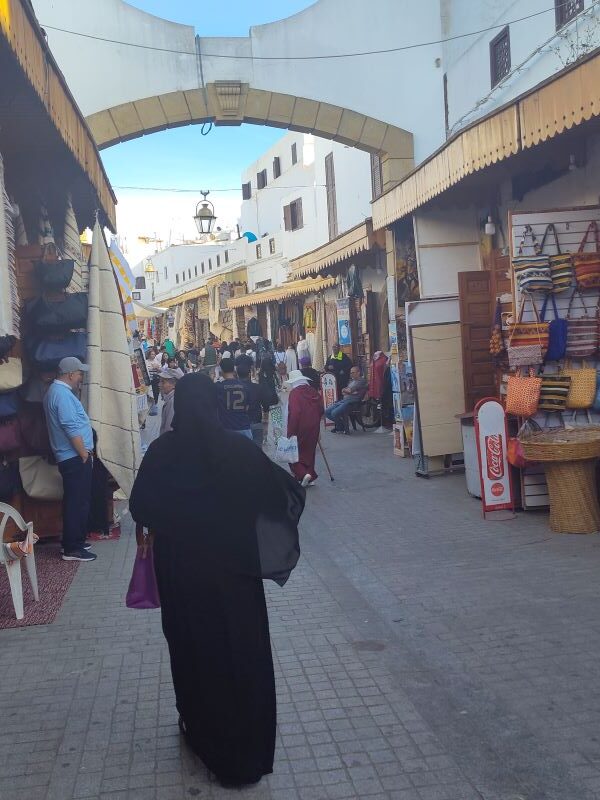
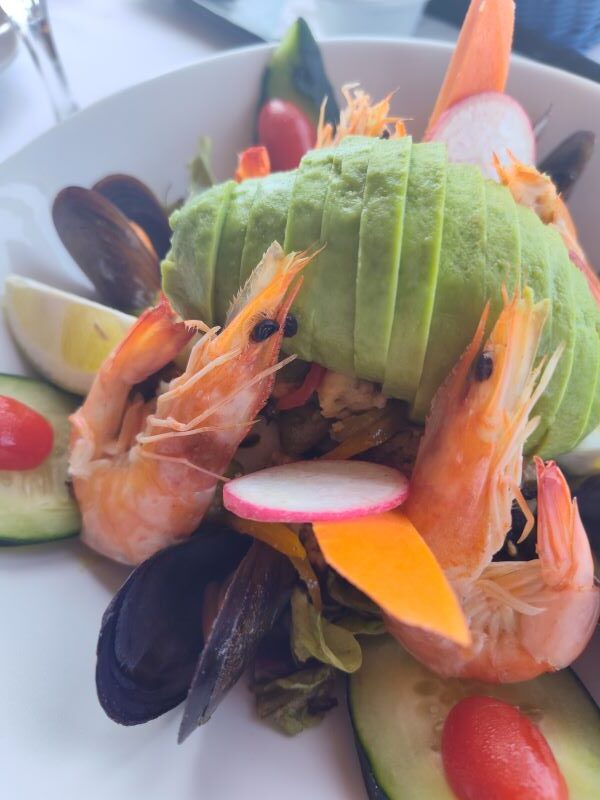
3 thoughts on “Things to do in Rabat Morocco”